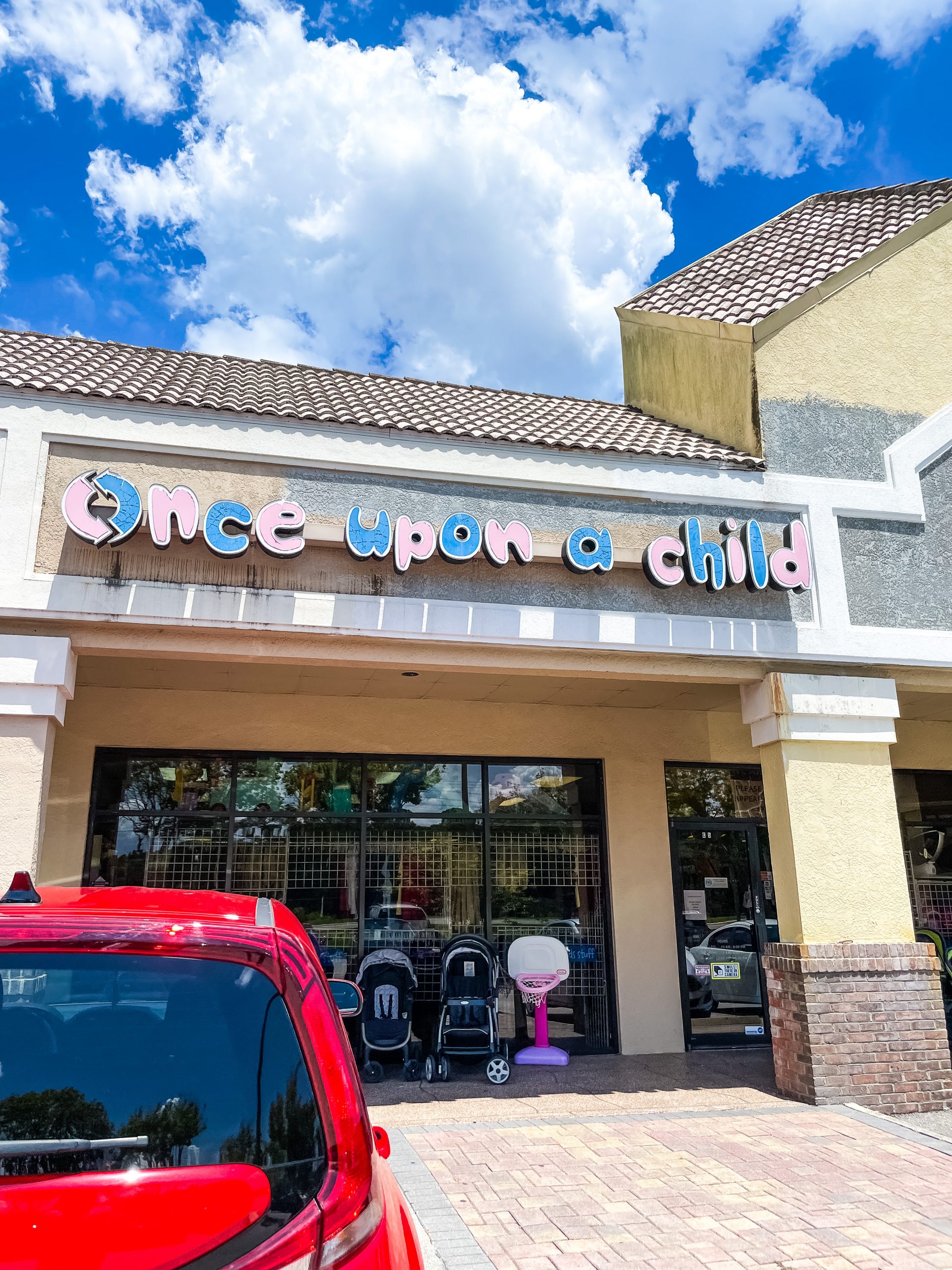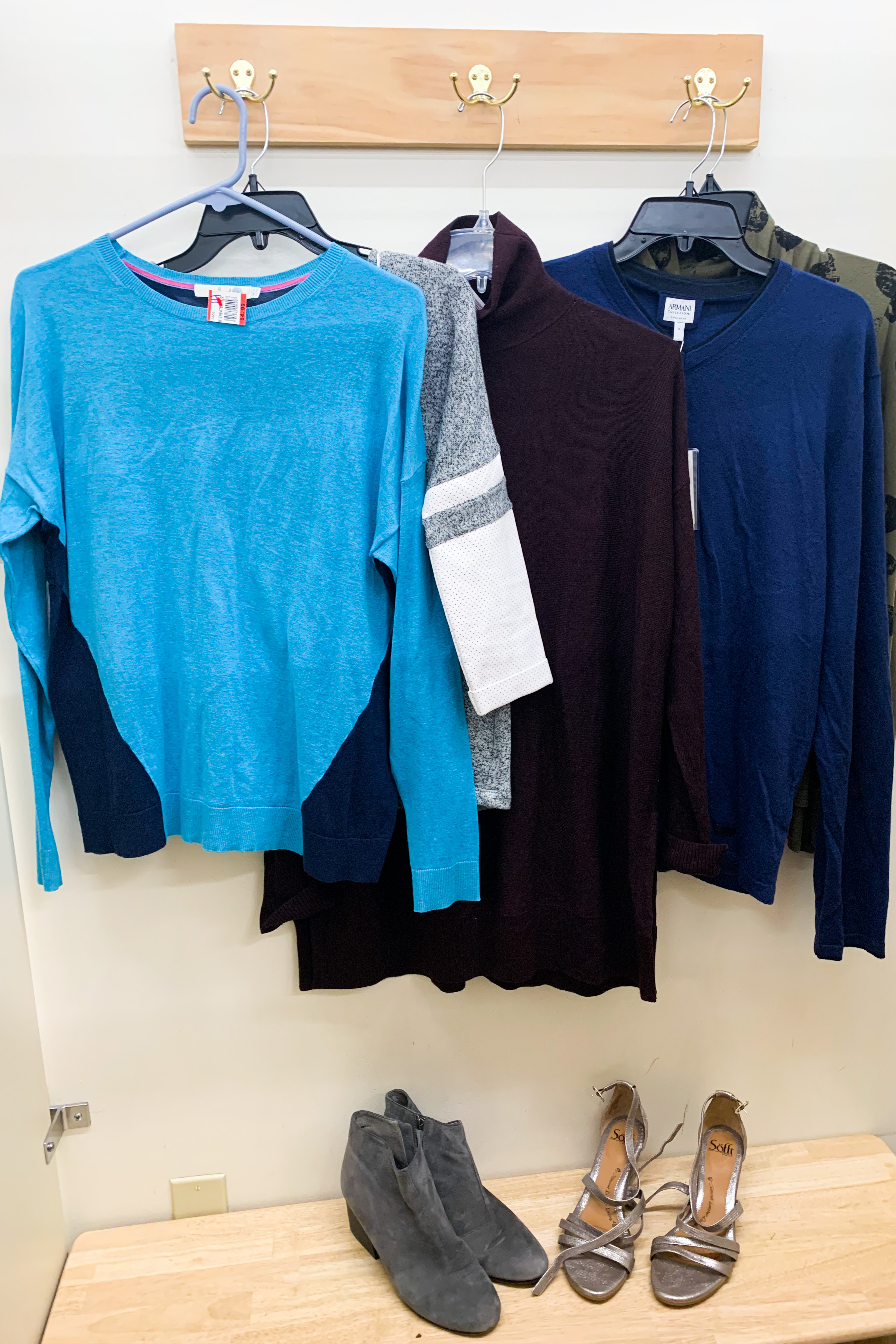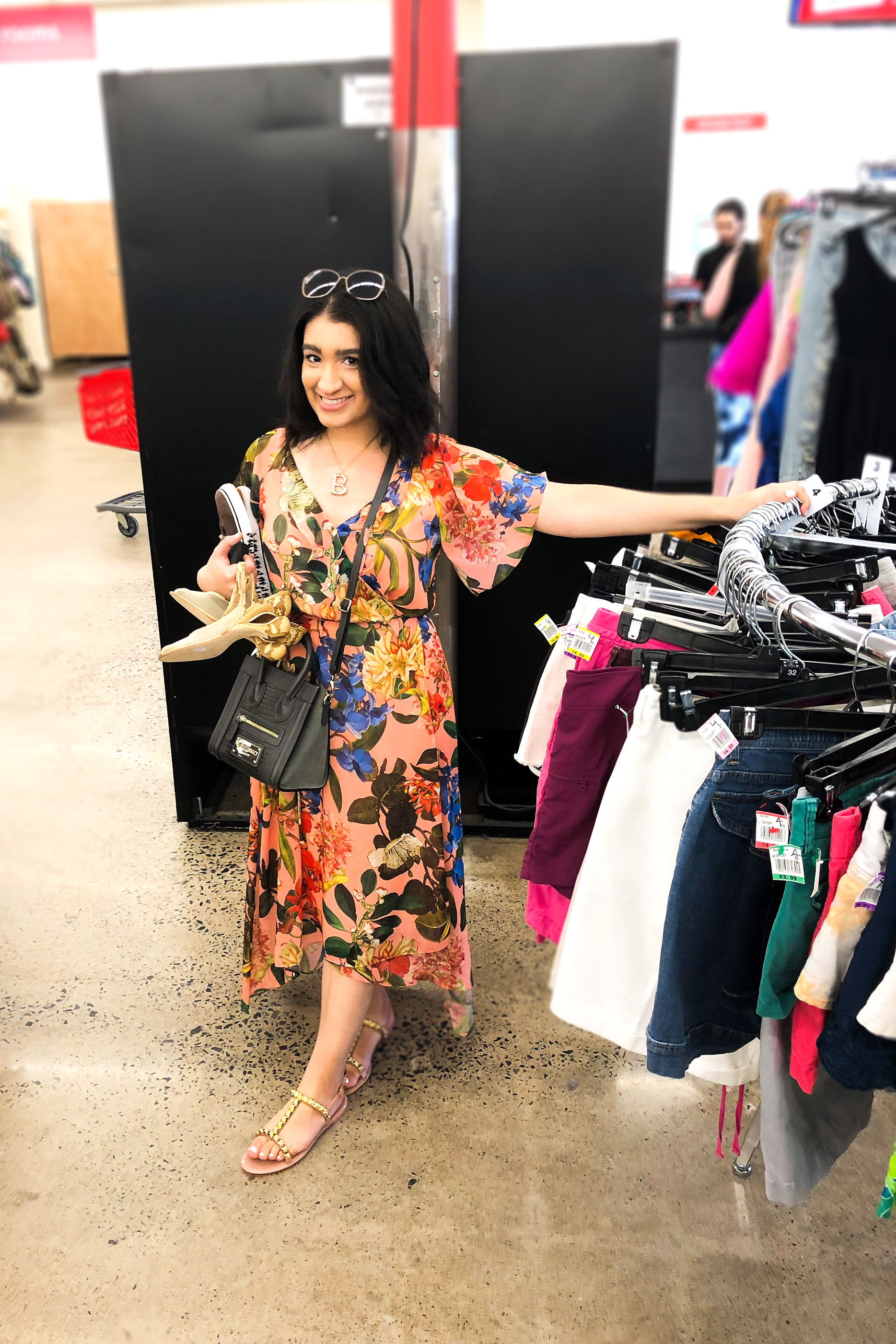
Did you know that I used to work for Once Upon a Child and Plato’s Closet? I worked predominantly as a buyer/manager at Once Upon a Child while also helping out with various tasks at Plato’s Closet. As a former employee, I know quite a bit about how each of these stores is run, especially when it comes to buying items into the store. Today, I wanted to share with you some insight into how you can sell more and make more money at both Once Upon a Child and Plato’s Closet stores.
Tips for Making More Money at Plato’s Closet & Once Upon a Child
Tip #1: Regularly Ask Employees What Items Are In High Demand
Each month, employees at both stores will be provided with a list of items that are in high demand. These items could be anything from baby furniture to denim and shoes. As a buyer, we are instructed that when these items come into the store and are in good condition (no flaws, stains, etc.), that we are to buy them as inventory for the store. As a seller, it is good practice to reach out to the store before stopping in to see what items are in high demand. If you happen to have any of those items, be sure to bring them in for the buyer to look through. More likely than not, the buyer will take most if not all of the items which will result in a higher payout for you.
Tip #2: Make Sure that Items are Clean, Free of Odors, and Stain-Free and Placed Neatly in a Bin or Bag
As a buyer for almost 2 years, I went through quite a few bins and bags that were less than ideal to sort through. There were a couple of instances when I went through bags and insects would fly out or items would be mixed in with trash. Although those were by no means normal circumstances, they did occur from time to time. When this did happen, I would pass on the bag and advise the seller to bring the items back cleaned and neatly folded in a bag or bin.
Many people thought that as a buy-sell-trade store, that items were laundered before placing them on the rack. That is simply not true. We would spot treat items from time to time, especially children’s equipment but once the item is bought into the store, it is immediately tagged and placed into the store’s inventory. This is important to keep in mind as a seller because buyers are trained to look for imperfections on your items. We are instructed to pass on items that
have stains, excessive wear, and odors. Additionally, we are often more likely to take items that are neatly folded as they are easier to look through in a short period of time.
Tip #3: Learn Top Tier and Marked Up Brands
Do you know how items are priced at these stores? When a buyer is interested in buying an item from a seller, they have to input that item into the store’s computer system in order to generate the price. In order to do this, the buyer has to choose from many items on the screen such as brand, condition, and style. Within this program is a brand tier system; This means that brands are placed in a tier system of low, medium, and high valued brands. The computer system comes with a standard tiered system but each store owner can go in and customize it as they please. Additionally, buyers may be instructed to manually override the price on items that they think should be priced higher than the autogenerated system recommends.
This is important to keep in mind as a seller because some brands are simply worth more money than others. In order to figure out what items a store finds valuable, look at the tags and see what items seemed to be marked up to higher than average prices. For example, at the Once Upon a Child and Plato’s stores that I worked at, North Face and Patagonia jackets were always marked up to $40+. Sometimes this would require a manual override while other times it was already marked up in the system. Learning these brands will help you to maximize your earnings at these stores.
Tip #4: Trade to Save on Sales Tax
If you are planning on selling items to either of these stores, it might be worth it for you to check and see if there are any good finds in-store. Whenever you make a purchase and trade in your old items to the store, you don’t have to pay the sales tax on your new purchase and the money that you earned will be used towards your purchase. Many stores will advertise this to their customers in order to keep the cash in-store while others may not mention it at all.
Tip #5: Learn the Payout Percentages Before Selling Your Items
As a buyer, there was sometimes a disconnect between how much money people thought they would receive for their items and how much they actually received for their items. This would sometimes result in angry and aggressive customers. We learned that it was best to educate sellers on the payout process and percentages before looking through items. By doing this, sellers knew the exact process that we used and how high the payouts would be. If you are unfamiliar with your local store’s payout percentages, be sure to ask as employees will gladly share that information with you.
If you don’t already, be sure to check out my Instagram for more Reselling Tips at @ RecycledRosesGuide (Click HERE) and my Facebook page HERE.
You can instantly shop all of my looks by following me on the LIKEtoKNOW.it shopping app HERE.
To get email notifications for my next blog post and to receive my monthly Reseller Recap (with freebies), sign up for my emails below:
Baci,



